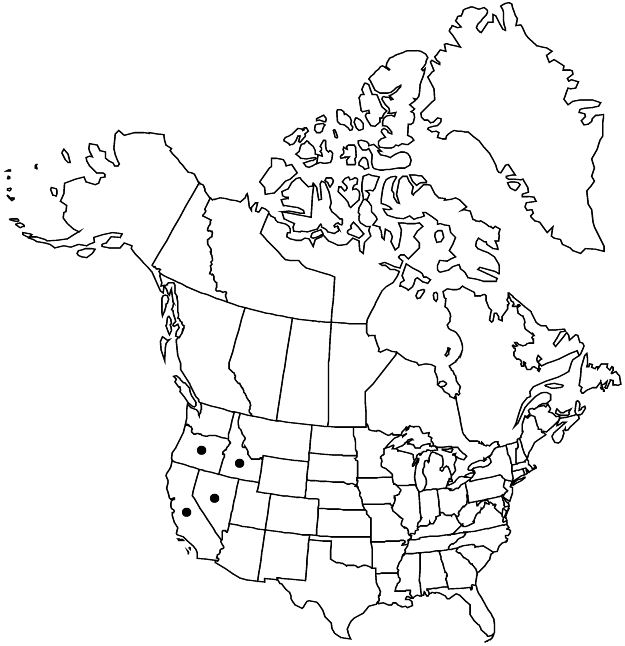Difference between revisions of "Horkelia fusca var. pseudocapitata"
Man. Pl. Oregon, 398. 1941.
FNA>Volume Importer |
FNA>Volume Importer |
||
| Line 15: | Line 15: | ||
|name=Horkelia pseudocapitata | |name=Horkelia pseudocapitata | ||
|authority=Rydberg ex Howell | |authority=Rydberg ex Howell | ||
| + | |rank=species | ||
|publication_title=Fl. N.W. Amer., | |publication_title=Fl. N.W. Amer., | ||
|publication_place=180. 1898 | |publication_place=180. 1898 | ||
| Line 21: | Line 22: | ||
|name=H. fusca subsp. pseudocapitata | |name=H. fusca subsp. pseudocapitata | ||
|authority=(Rydberg ex Howell) D. D. Keck | |authority=(Rydberg ex Howell) D. D. Keck | ||
| + | |rank=subspecies | ||
}} {{Treatment/ID/Synonym | }} {{Treatment/ID/Synonym | ||
|name=Potentilla douglasii var. pseudocapitata | |name=Potentilla douglasii var. pseudocapitata | ||
|authority=(Rydberg ex Howell) Jepson | |authority=(Rydberg ex Howell) Jepson | ||
| + | |rank=variety | ||
}} | }} | ||
|hierarchy=Rosaceae;Rosaceae subfam. Rosoideae;Rosaceae tribe Potentilleae;Horkelia;Horkelia sect. Capitatae;Horkelia fusca;Horkelia fusca var. pseudocapitata | |hierarchy=Rosaceae;Rosaceae subfam. Rosoideae;Rosaceae tribe Potentilleae;Horkelia;Horkelia sect. Capitatae;Horkelia fusca;Horkelia fusca var. pseudocapitata | ||
| Line 39: | Line 42: | ||
|elevation=900–2300 m | |elevation=900–2300 m | ||
|distribution=Calif.;Idaho;Nev.;Oreg. | |distribution=Calif.;Idaho;Nev.;Oreg. | ||
| − | |discussion=<p>The application of the epithet pseudocapitata here differs significantly from that of P. A. Rydberg (1908c), D. D. Keck (1938), and most floras, who used it for the taxon that is here called < | + | |discussion=<p>The application of the epithet pseudocapitata here differs significantly from that of P. A. Rydberg (1908c), D. D. Keck (1938), and most floras, who used it for the taxon that is here called <i></i>var.<i> brownii</i>. Instead, <i></i>var.<i> pseudocapitata</i> encompasses the bulk of what had been called var. (or subsp.) capitata, except in mountains bordering the Palouse Prairie in Idaho, Oregon, and Washington. For nomenclatural details, see B. Ertter and J. L Reveal (2007).</p><!-- |
| − | --><p>As here circumscribed, < | + | --><p>As here circumscribed, <i></i>var.<i> pseudocapitata</i> is a relatively large, big-petaled variety that grows in the mountains in and bordering the northern Intermountain Region in northeastern California (primarily the Warner Mountains), northern <i>Nevada</i>, southeastern Oregon, and southern Idaho, extending northward along valleys from Camas to Blaine counties. Intermediate plants are common where the range intersects those of <i></i>var.<i> brownii</i>, <i></i>var.<i> capitata</i>, and <i></i>var.<i> parviflora</i>, though in the core of its range <i></i>var.<i> pseudocapitata</i> is reasonably distinctive and uniform.</p> |
|tables= | |tables= | ||
|references= | |references= | ||
| Line 49: | Line 52: | ||
-->{{#Taxon: | -->{{#Taxon: | ||
name=Horkelia fusca var. pseudocapitata | name=Horkelia fusca var. pseudocapitata | ||
| − | |||
|authority=(Rydberg ex Howell) M. Peck | |authority=(Rydberg ex Howell) M. Peck | ||
|rank=variety | |rank=variety | ||
| Line 64: | Line 66: | ||
|publication year=1941 | |publication year=1941 | ||
|special status=Endemic | |special status=Endemic | ||
| − | |source xml=https://jpend@bitbucket.org/aafc-mbb/fna-data-curation.git/src/ | + | |source xml=https://jpend@bitbucket.org/aafc-mbb/fna-data-curation.git/src/f50eec43f223ca0e34566be0b046453a0960e173/coarse_grained_fna_xml/V9/V9_416.xml |
|subfamily=Rosaceae subfam. Rosoideae | |subfamily=Rosaceae subfam. Rosoideae | ||
|tribe=Rosaceae tribe Potentilleae | |tribe=Rosaceae tribe Potentilleae | ||
Revision as of 22:40, 16 December 2019
Stems 3–6 dm. Basal leaves green, 10–35(–40) cm; leaflets 4–6(or 7) per side, narrowly to broadly obovate, 10–30(–35) × (5–)10–20(–25) mm, 1/2 to nearly as wide as long, divided 1/5–1/4 to midrib into 8–14 teeth, surfaces not obscured, ± sparsely hirsute to glabrate. Cauline leaves 1–4(or 5); leaflets of proximalmost 2 or 3(–5) per side. Inflorescences green to reddish purple, congested to open, comprising 1/6–1/3 of stem, composed of 10–30-flowered glomerules, glandular hairs not or obscurely red-septate; bracts acute-lobed, not obscuring pedicels and flowers at maturity. Flowers: epicalyx bractlets 2–3.5(–4) mm; hypanthium 2 × 2.5–4 mm; petals (3–)4–6 mm; filaments 0.5–1.5 mm, usually longer than wide, anthers 0.5–0.6 mm; styles 1–1.5 mm. Achenes 1.6–1.8 mm. 2n = 28.
Phenology: Flowering summer.
Habitat: Dry meadow edges, often with sagebrush, aspen, and/or willows, open conifer woodlands, mainly on volcanic or granitic soil
Elevation: 900–2300 m
Distribution

Calif., Idaho, Nev., Oreg.
Discussion
The application of the epithet pseudocapitata here differs significantly from that of P. A. Rydberg (1908c), D. D. Keck (1938), and most floras, who used it for the taxon that is here called var. brownii. Instead, var. pseudocapitata encompasses the bulk of what had been called var. (or subsp.) capitata, except in mountains bordering the Palouse Prairie in Idaho, Oregon, and Washington. For nomenclatural details, see B. Ertter and J. L Reveal (2007).
As here circumscribed, var. pseudocapitata is a relatively large, big-petaled variety that grows in the mountains in and bordering the northern Intermountain Region in northeastern California (primarily the Warner Mountains), northern Nevada, southeastern Oregon, and southern Idaho, extending northward along valleys from Camas to Blaine counties. Intermediate plants are common where the range intersects those of var. brownii, var. capitata, and var. parviflora, though in the core of its range var. pseudocapitata is reasonably distinctive and uniform.
Selected References
None.